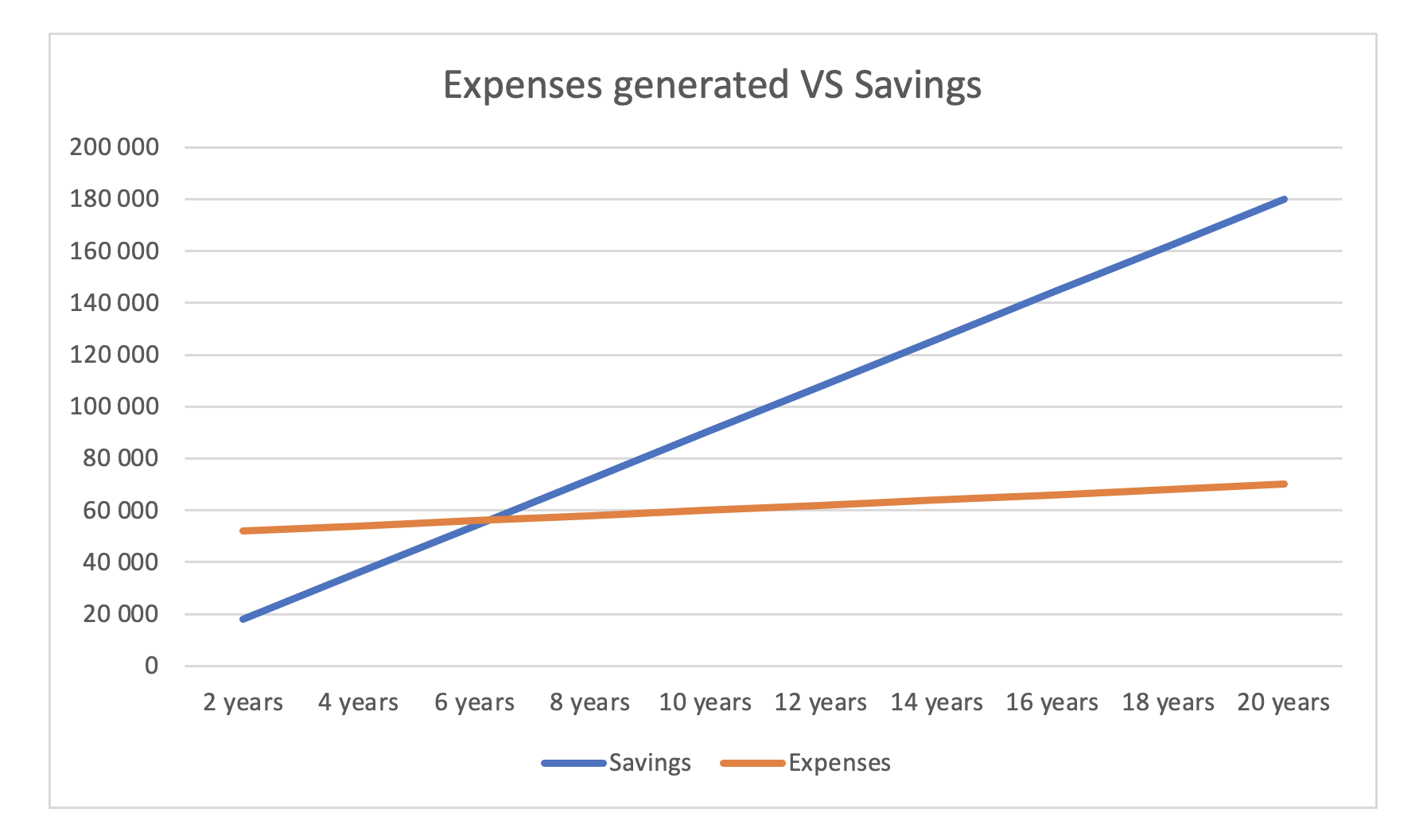Que ce soit aux yeux d’une entreprise ou d’une personne, le gaspillage n’est jamais bien perçu. Dans les différents milieux industriels, plusieurs types de ressources sont utilisées et celles-ci représentent des coûts importants. C’est pourquoi il est parfois intéressant d’investir dans des infrastructures permettant la réduction des coûts associés à l’utilisation des différentes ressources utilisées dans vos procédés.
Bref, cet article a pour but de présenter une technique visant le traitement du concentré d'une osmose inverse afin d'en permettre la réutilisation maximale.
L'eau une ressource rare et dispendieuse
Bien que très efficaces, les systèmes d’osmose inverse nécessitent une très grande quantité d’eau pour fournir les besoins des utilisateurs. Typiquement, les osmoses inverses offrent un ratio de 75/25, ce qui signifie que 75% de l’eau entrante peut être utilisé alors que le 25% restant est le concentré et est envoyé au drain. Ces ratios peuvent être ajustés en fonction de l’eau et des contaminants. Par exemple, si l’eau d’alimentation est très propre, le ratio peut être ajusté pour diminuer les pertes en eaux, 80/20 par exemple. À l’opposé, si l’eau contient une forte concentration en silice le ratio pourrait nécessiter des ajustements afin de diminuer la concentration du concentré pour éviter l’encrassement des membranes (60/40).
Les pertes d’eau engendrées par ces ratios perméat/concentré sont immenses et il n’est pas peu dire que l’eau est une ressource limitée et importante. Sans oublier que son utilisation peut parfois représenter des coûts exorbitants. En fonction de votre emplacement, les coûts d’utilisation de l’eau varient grandement.
Par exemple, à Toronto, en 2022, lorsque vous utilisiez moins de 1 099 850 gallons, le coût est de $0.01994045/gal. Au-dessus de cette consommation, le coût au gallon est de $0.01395781. Pour mettre en lumière ce que représentent ces coûts, imaginons cette situation.
Votre entreprise possède un système d’osmose inverse offrant un débit de 80 gallons par minute (gpm) avec un ratio 80/20. Ce qui signifie que le système dépense 20 gallons par minute pour fournir les 80 gallons utilisables. Fonctionnant 8 heures par jour, 5 jours par semaine durant toute l’année. C’est un total annuel de 12 480 000 gallons d’eau utilisée, et ce, seulement par votre osmose inverse. En coût, cela représente un grand total de 180 773,48$ annuellement.
L'utilisation optimisée de votre eau
Dans une optique de diminution de la consommation d’eau et d’économie et comme nous l’avons précisé plus haut, le ratio perméat/concentré peut être ajusté dans certaines conditions. Toutefois, ce n’est pas toujours possible. Puisque dans la situation ci-dessus, le taux de réjection est déjà très bas, il serait difficile de diminuer les pertes encore plus.
Pour mettre les choses en perspective, les pertes reliées aux ratios 80/20 dans la situation actuelle représentent approximativement 2.5 millions de gallons d’eau sur une période d’un an. En utilisant le coût le moins chère, cela représente une perte annuelle d’approximativement 35 000$.
Avec comme objectif de diminuer ces pertes pécuniaires relativement importantes, chez Durpro, nous proposons une solution alternative permettant d’aller récupérer jusqu’à 25% de concentré.
- Avant d’aller plus loin, bien que 25% puissent sembler bas, mais dans la situation utilisée, cela représente quelque 625 000 gallons d’eau ou près de 9000$ annuellement.
Bref, une des solutions offrant un retour sur investissement intéressant consiste en l’ajout d’une deuxième osmose inverse de plus petite taille permet de réutiliser une fraction du concentré qui aurait normalement été rejeté. En plus d’offrir un retour sur investissement intéressant, l’ajout d’une deuxième osmose inverse réduit le gaspillage d'eau.

Ce schéma représente, de façon très simplifiée, le fonctionnement du principe d’ajout d’un deuxième système d’osmose inverse afin de diminuer les pertes en eaux.
Un retour sur investissement écologique
En réutilisant l’exemple ci-haut d’un système d’osmose inverse offrant un débit de 80gpm, l’ajout d’un deuxième système d’osmose inverse offrant un débit de 20 gpm permettrait la réutilisation de 25% du concentré de la première osmose.
Donc, en économisant 625 000 gallons d’eau par année, sans prendre en compte des augmentations futures du coût de l’eau et en installant une osmose inverse de 20 gpm, estimé à +/- 50 000$ avec des coûts opérationnels annuels avoisinant les 1000$, voici une approximation des investissements versus les dépenses associer à l’ajout de ce type de système.

Même si ce tableau est très simple et que ce ne sont que des estimations, dans une situation exactement comme celle décrite ci-haut, le retour sur investissement se ferait en environ 6 ans.
Un ajout avantageux
Évidemment, les estimations ci-haute ne reflète que la situation décrite ci-haut. Il est donc important de préciser que les variations de retour sur investissement peuvent être majeures. Les changements peuvent provenir du fait que le GPM produit n’est pas le même, du coût variable pour l’utilisation de l’eau ou du type de contaminants dans celle-ci.
- D’ailleurs, pour en apprendre plus sur les facteurs pouvant affecter le coût d’acquisition et les coûts opérationnels d’un système de traitement d’eau industrielle, nous vous invitons à visiter cet article.
Bien que les coûts associés à l’installation d’un deuxième système d’osmose inverse peuvent varier grandement, au Canada, le retour sur investissement, causer par l’ajout de ce type de système est généralement avantageux puisque l’utilisation de l’eau dans le secteur industriel peut représenter des coûts importants. Sans oublier les avantages variés qu’ont les entreprises ayant des pratiques écologiques (image corporative, valeur sociale, conscience environnementale, etc.)